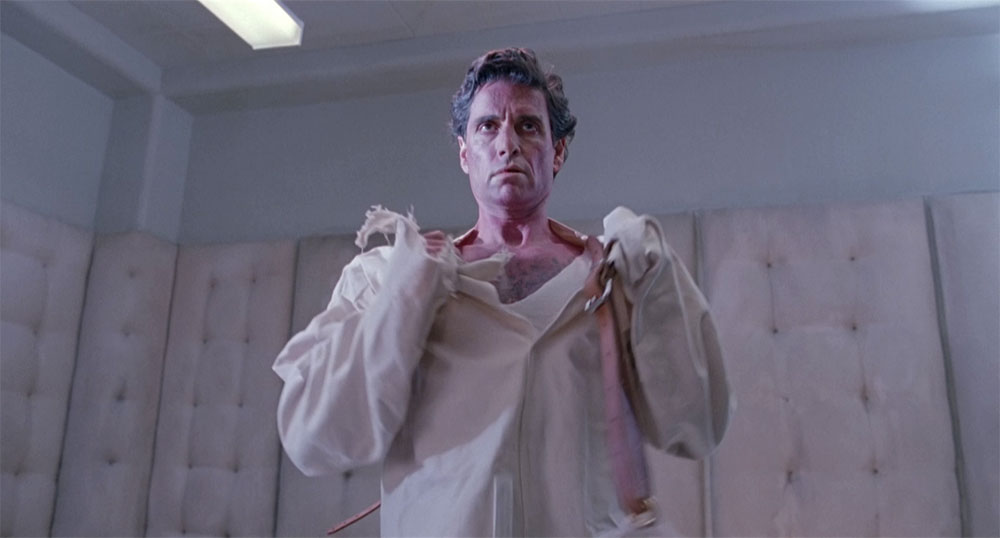As a near lifelong New Englander (with a few years spent in nearby New York), I’ve always been drawn to the horror stories of the region, most of which deal with the geography or the weather, which is more often than not a direct result of the former. Two major literary figures loom over the six states that make up New England, Stephen King and H. P. Lovecraft, both of whom have had their reams of fiction adapted many times for the screen. If there’s one thing more predictable than a harsh New England winter, it’s a King or Lovecraft adaptation being a poor imitation of its source. Fortunately, there’s a handful of exceptions to the rule, one of them being Alien writer Dan O’Bannon’s rollicking practical-creature-effects-fueled adaptation of Lovecraft’s story “The Case of Charles Dexter Ward,” The Resurrected (1991).
Set in Lovecraft’s real-life birthplace of Providence, Rhode Island, which is introduced in the opening moments of the film as “a smallish city in a small corner of the smallest state in the union,” O’Bannon’s film hardly romanticizes its locale. We are used to seeing the seaside and mountainous locations of New England rendered in glowing autumnal foliage or framed alongside towering, well kept lighthouses. But Lovecraft, and O’Bannon in his adaptation, doesn’t shy away from the dark history to which many New Englanders have long tried to reconcile themselves. In O’Bannon’s film, Providence is a city where residents enjoy the seabreeze until the “river starts to sink,” having “stunk since the witch hunts”. It posits not only that the denizens of Rhode Island’s most populous city are aware of, and complacent about, the more undesirable aspects of where they live, but that its history of persecution comes with the territory, rather literally.
The Resurrected is concerned with history in its narrative, a story that weaves noir conventions with those of sci-fi and horror. It features a private detective investigating a chemical engineer involved in cryptic experiments in a remote cabin, which may or may not be connected to his ancestors from the 1700s. Equal parts murder mystery, monster movie, and mad-scientist spectacle, O’Bannon’s film takes Lovecraft’s lean story and turns it into something decidedly more grandiose. Populated by characters plucked from a 1940s serial (the eerily calm private eye, the creepy scientist, the untrusting femme fatale), it is distinctly at odds with the last decade of the 20th century, the time in which it is set and was released.
Though the noir-leaning narrative eventually gives way to a gory creature feature, the road to getting there is an interesting detour. Much of its action is propelled by investigation, with a dialogue-heavy script which mirrors Lovecraft’s prose much more than do most adaptations, even the good ones (i.e., Stuart Gordon’s). Some could see this as languid, but by the time we get to the last act, which includes a gorgeous, lantern-lit cavern expedition alongside stop-motion skeletons and scenery-chewing acting from Chris Sarandon, the exposition feels wholly earned. The Resurrected is still not as well known as Re-Animator (1985) or From Beyond (1986), yet it earns its company with those and other equally revered Lovecraft adaptations as not only good movies but films that truly understand their sources and the, appropriately controversial, personality who penned them.
The Resurrected screens tonight, November 2, and on November 4, at Anthology Film Archives as part of the series “H. P. Lovecraft.”



